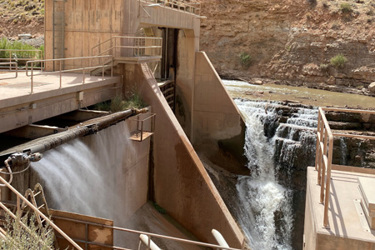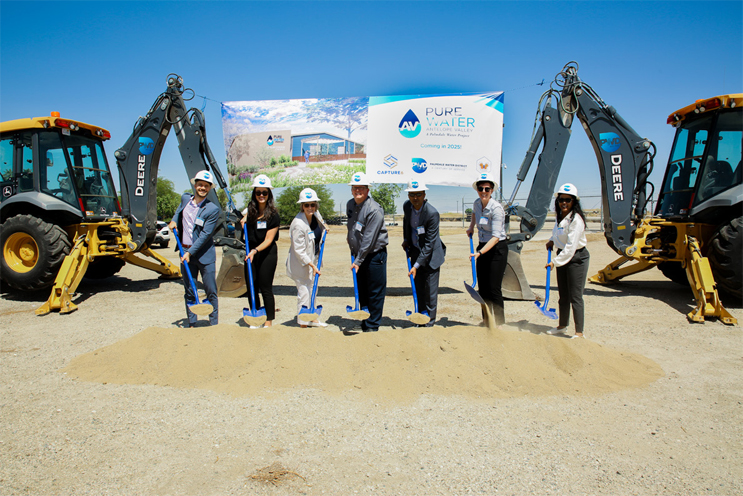How Water Reuse Projects Are Addressing Water Scarcity In The West — And Beyond
By Tama Snow and Ryan Murdock

As water scarcity becomes a stark reality around the globe, more municipalities, water utilities, and industrial enterprises are exploring water reuse projects and adopting regulations to support them. Fundamentally, water reuse can help drought-proof regions and diversify water supply portfolios with recycled water.
While water reuse is particularly prevalent in California, interest in direct and indirect potable reuse projects is growing throughout the Western U.S. and beyond. Although this work is heavily present in the West, there are a growing number of reuse projects in states experiencing rapid growth and climate change. In other regions, states such as Texas and Florida are implementing water reuse, and states in the Midwest are considering it.
As a sustainable design and engineering firm, Stantec is at the forefront of some of these notable projects for both municipal and industrial clients.
Water Reuse In Action
There are multiple water reuse efforts underway to address the issue of water scarcity. These efforts make use of existing local water resources to continue to provide access to safe, sustainable, affordable drinking water for everyone.
For example, Pure Water San Diego is a large-scale, direct potable reuse program that our team is working on in support of the city of San Diego. The program treats recycled water to potable reuse standards, stores that water in a reservoir, blends it with other water sources, and treats it further to meet drinking water quality standards.
In Palmdale, CA, Stantec designed an advanced water treatment demonstration facility for the Pure Water Antelope Valley project. This facility will be used to collect data to further inform design of a full-scale facility and obtain regulatory approval for this groundwater replenishment project.
In rapidly growing and arid southern Utah, the Washington County Regional Reuse Purification System is also underway. Stantec is serving as the Owner’s Advisor to help implement a regional water reuse program that consists of more than 30 projects to improve the efficacy of local water supplies.
Today, there is broader public acceptance of recycled water than there was in the last few decades. Residents are realizing the realities of water scarcity and the benefits of environmental sustainability, and they have seen firsthand that treatment technology has been proven to produce water that exceeds drinking water quality requirements.
The Role Of Climate Change In Driving Water Reuse
Climate change amplifies the variability that has long defined water supply in the Western U.S. We’re experiencing long-term climate variability (including increased temperatures) and droughts of longer duration, increased frequency, and/or higher intensity than reflected in historical water supply conditions.

Pure Water Antelope Valley groundbreaking
These will further stress water supplies already under strain from population growth, increasing demands, and industrial development. Hotter and drier climate conditions are also driving higher water needs for municipal outdoor irrigation and irrigated agriculture.
These water scarcity drivers are leading many water managers to seek solutions to balance water supply and demand through water supply portfolio diversification. Many water suppliers are looking beyond traditional surface and groundwater supplies to strategies such as reuse and treatment of impaired water sources (including desalination), water banking and acquisitions, and enhanced water conservation.
The rapid pace of change in demand and water availability can exceed the pace of adaptation. Over the past few decades, decision-making and permitting for water supply projects have become more complex in recognition of human, environmental, social, and economic implications and the heightened role of the public in water allocation decisions. When a state-level policy and regulatory framework has advanced sufficiently to allow clear project permitting and implementation guidelines, water reuse projects can often be implemented more efficiently and effectively than many other traditional water supply solutions.
Furthermore, water reuse projects can help buffer the impacts of climate extremes by providing a highly reliable local water supply that can be used to offset the loss of other water supplies and replenish groundwater basins and storage reservoirs during wet years for use during dry years.
With climate change, who knows what’s next? We’re seeing wild, unpredictable weather patterns that communities aren’t prepared for. Utilities, industries, and municipalities need to plan for the unknown and consider a range of potential future scenarios and challenges. That is why it’s imperative to make efficient use of available local resources. Having these local resources available is generally more cost-effective than importing water, and this local control also helps cities and towns prepare for worst-case scenarios.
Keeping The Public Informed
It’s easy to take water for granted. If it runs from the tap when people turn it on, many water users don’t think much about the availability of their water. But when rates go up or water becomes rationed, the public takes note.
Public outreach and education around water reuse and water supply are increasingly important, and many municipalities and industries are doing a great job of this. As a result, people are becoming much more open to the idea of recycled water as a drinking water supply. Regulations are also evolving in many states to better enable water reuse while simultaneously protecting human and ecosystem health. State and federal funding also plays a role in the implementation of water reuse projects.
With this positive momentum, there’s reason for optimism about the future of our water supply — but there is a lot of work to do in the meantime. Public support combined with proactive planning, advancing policy and regulatory frameworks, proven technologies, and innovation from companies, utilities, and municipalities indicates that we can continue to take steps toward a sustainable water supply future.
 About The Author
About The Author
Tama Snow is VP and regional business leader of water (U.S. Pacific) for Stantec, responsible for building the Water, Wastewater, and Recycled Water Resources practice groups. A significant component of her work is mentoring staff and creating a diverse, inclusive, and inviting work environment for all.
 Ryan Murdock is a vice president and water resources practice leader at Stantec. He has over 20 years of experience in comprehensive planning for strategic, large-scale water resources programs throughout the western U.S. from Texas to California.
Ryan Murdock is a vice president and water resources practice leader at Stantec. He has over 20 years of experience in comprehensive planning for strategic, large-scale water resources programs throughout the western U.S. from Texas to California.
